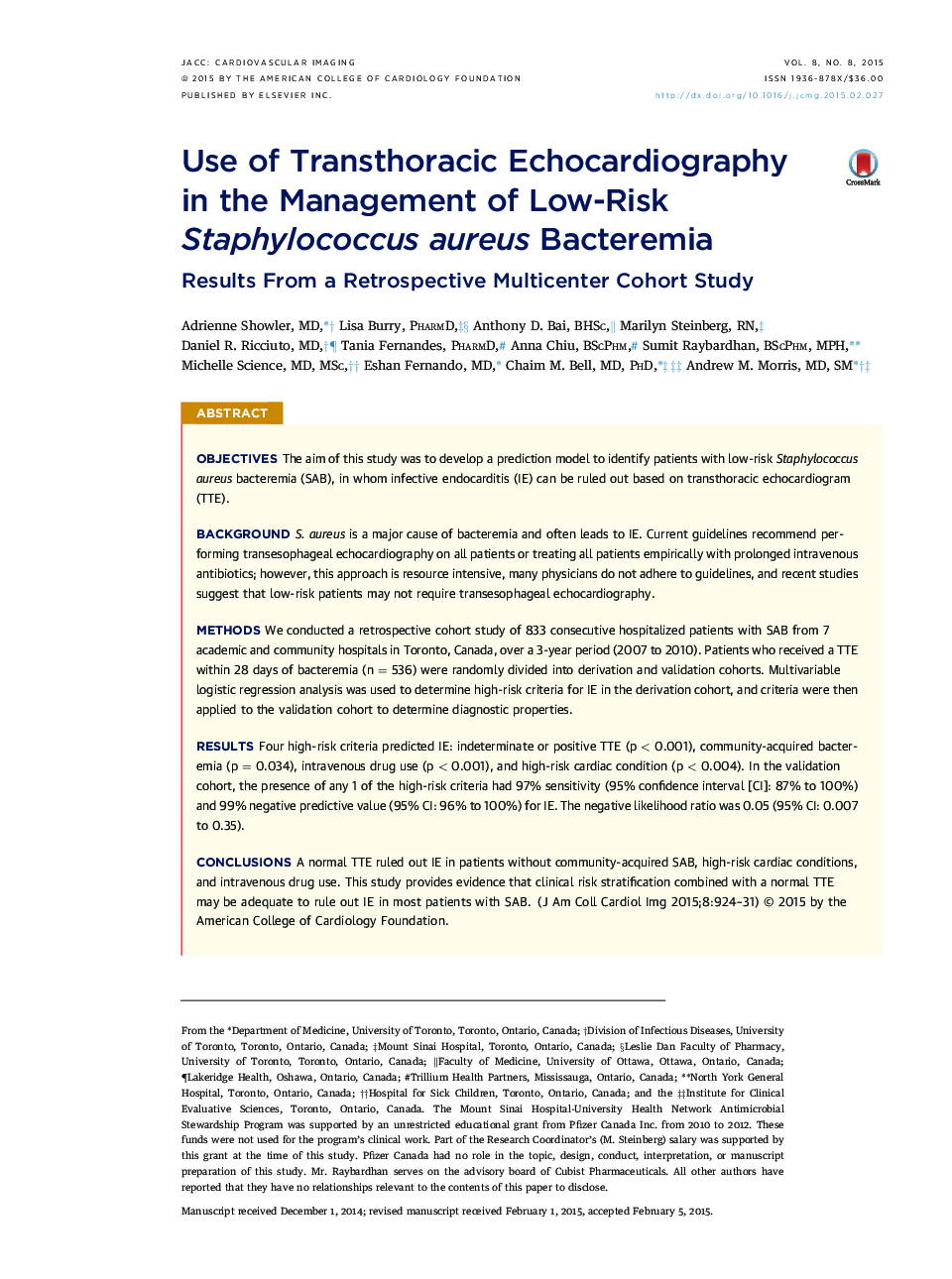| کد مقاله | کد نشریه | سال انتشار | مقاله انگلیسی | نسخه تمام متن |
|---|---|---|---|---|
| 2937824 | 1176902 | 2015 | 8 صفحه PDF | دانلود رایگان |
ObjectivesThe aim of this study was to develop a prediction model to identify patients with low-risk Staphylococcus aureus bacteremia (SAB), in whom infective endocarditis (IE) can be ruled out based on transthoracic echocardiogram (TTE).BackgroundS. aureus is a major cause of bacteremia and often leads to IE. Current guidelines recommend performing transesophageal echocardiography on all patients or treating all patients empirically with prolonged intravenous antibiotics; however, this approach is resource intensive, many physicians do not adhere to guidelines, and recent studies suggest that low-risk patients may not require transesophageal echocardiography.MethodsWe conducted a retrospective cohort study of 833 consecutive hospitalized patients with SAB from 7 academic and community hospitals in Toronto, Canada, over a 3-year period (2007 to 2010). Patients who received a TTE within 28 days of bacteremia (n = 536) were randomly divided into derivation and validation cohorts. Multivariable logistic regression analysis was used to determine high-risk criteria for IE in the derivation cohort, and criteria were then applied to the validation cohort to determine diagnostic properties.ResultsFour high-risk criteria predicted IE: indeterminate or positive TTE (p < 0.001), community-acquired bacteremia (p = 0.034), intravenous drug use (p < 0.001), and high-risk cardiac condition (p < 0.004). In the validation cohort, the presence of any 1 of the high-risk criteria had 97% sensitivity (95% confidence interval [CI]: 87% to 100%) and 99% negative predictive value (95% CI: 96% to 100%) for IE. The negative likelihood ratio was 0.05 (95% CI: 0.007 to 0.35).ConclusionsA normal TTE ruled out IE in patients without community-acquired SAB, high-risk cardiac conditions, and intravenous drug use. This study provides evidence that clinical risk stratification combined with a normal TTE may be adequate to rule out IE in most patients with SAB.
Journal: JACC: Cardiovascular Imaging - Volume 8, Issue 8, August 2015, Pages 924–931
